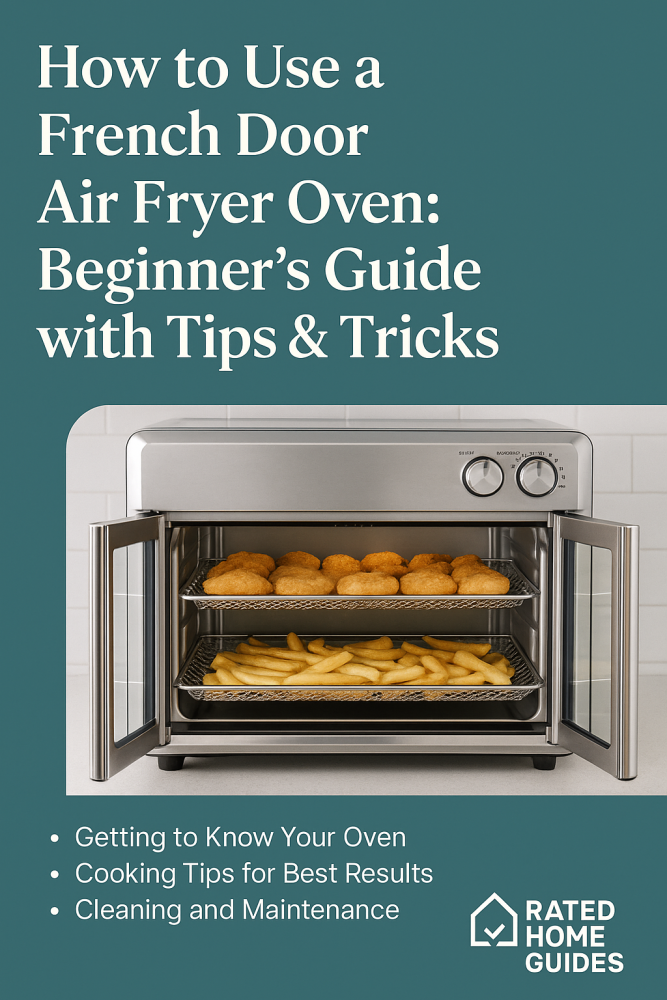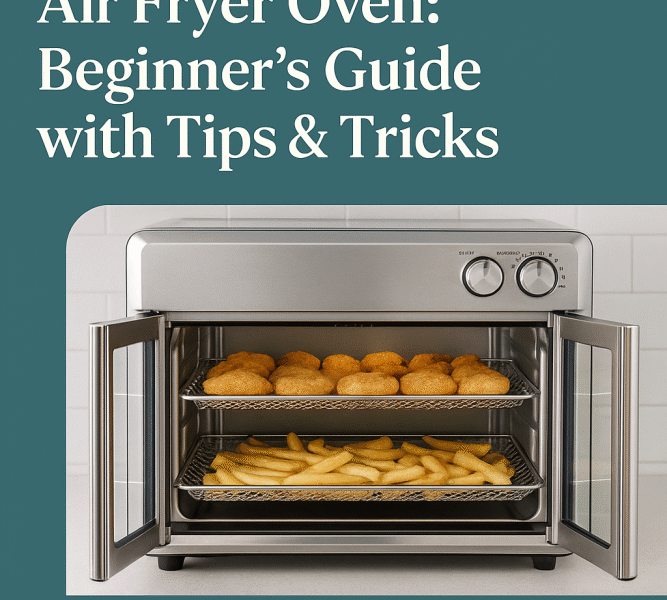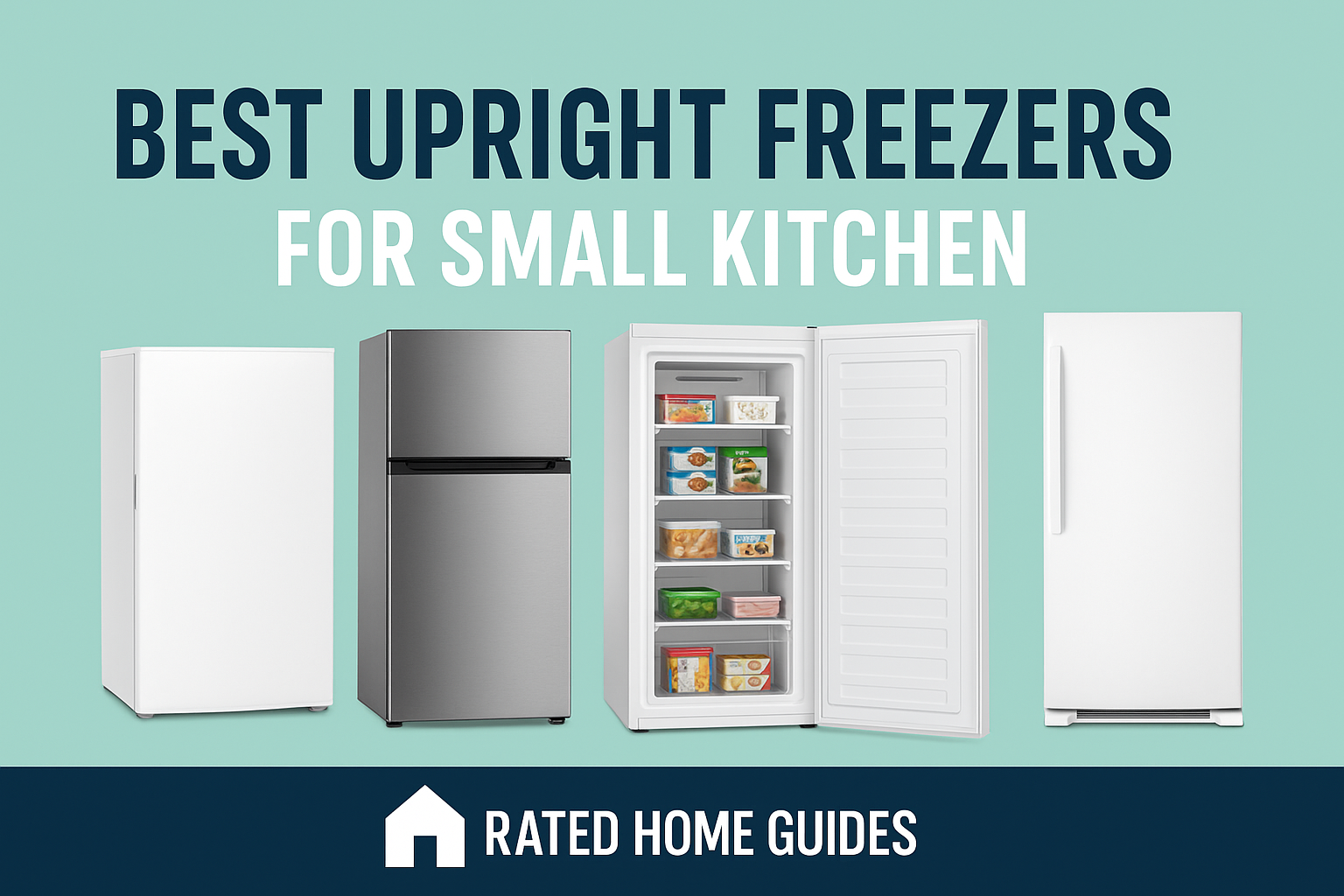If you’ve recently purchased a French door air fryer oven, you’re about to unlock one of the most versatile appliances for your kitchen. Unlike single-use gadgets, this oven combines air frying, baking, roasting, and more, all within a sleek, space-saving design. The French door feature makes it more convenient and user-friendly, especially when your hands are full or you’re juggling multiple dishes. Best of all, it allows you to enjoy healthier meals with less oil while maintaining flavor and crispiness.
This guide will walk you through everything you need to know, from setup to cooking tips and cleaning tricks. For beginners, getting used to a new appliance can feel intimidating, but once you understand the functions, it quickly becomes second nature. Each section below is designed to give you confidence in using every feature of your oven. By the end, you’ll be ready to prepare meals that are both delicious and efficient.

Whether you’re making quick snacks, family dinners, or even baked desserts, this oven has the flexibility to handle it all. With just a few beginner-friendly tricks, you’ll be amazed at how easily you can replace multiple kitchen tools. From crispy fries to juicy roasts, your new French door air fryer oven is about to become a staple. Let’s dive into the details so you can get started the right way.
1. Getting to Know Your French Door Air Fryer Oven
A French door air fryer oven is more than just an appliance—it’s a multitasking powerhouse. The double-door design gives you easier access compared to pull-down doors, reducing strain when placing heavy trays inside. Because the doors can be opened with one hand, you can carry food with the other for more efficiency. It’s perfect for busy households where time and convenience matter.
Most models come with multiple functions like air fry, bake, roast, broil, toast, and dehydrate. This makes them more versatile than traditional air fryers, which often only focus on one or two settings. By combining so many features in one, you’re essentially getting a toaster, oven, and fryer all in one compact appliance. For small kitchens, this means less clutter and more functionality.
Your oven will also include useful accessories like wire racks, crumb trays, or even rotisserie kits. These tools are designed to help you explore different cooking styles without needing extra purchases. Take time to learn which accessories pair with each function for the best results. Understanding these basics will set you up for success in the kitchen.
2. First-Time Setup
Before using your oven for cooking, there are a few important steps to follow. Start by unboxing all accessories and washing them in warm, soapy water to remove any factory residue. Wipe the interior with a damp cloth to clear dust or protective oils from the manufacturing process. This ensures your first meal will taste fresh without unwanted chemical odors.
Next, preheat the oven empty at around 400°F for 10–15 minutes. This helps burn off any leftover oils or residues inside the heating elements. Don’t be alarmed if you notice a slight smell—it’s completely normal during this initial burn-off cycle. Once finished, your oven will be ready for safe cooking.
Finally, consider where to place your oven. Since it generates a lot of heat, it needs at least four inches of clearance on all sides for proper ventilation. Keep it on a sturdy, heat-safe surface away from curtains, walls, or other heat-sensitive items. Proper placement not only protects your kitchen but also extends the lifespan of your appliance.
3. Mastering the Controls
Learning the controls is one of the most important steps for beginners. Most French door ovens feature a temperature dial, a timer, and multiple cooking modes. While each brand varies, the functions are generally intuitive once you understand the basics. The key is to always double-check settings before cooking to avoid mistakes.
Temperature settings usually range from 80°F to 450°F. Lower temperatures are perfect for dehydrating fruits or slow-cooking meats, while higher ones deliver crispy fries and roasted vegetables. Always refer to recipes for guidance, but be aware your oven may cook slightly faster than traditional appliances. Using an oven thermometer can help ensure accuracy.
Cooking modes like air fry, bake, toast, and broil each serve unique purposes. Air fry mode works for crispy foods, while bake mode is ideal for pastries and casseroles. Broil adds a golden finish to the tops of dishes, while toast ensures even browning for bread. Mastering these controls early will make cooking effortless.
4. Using the Air Fryer Function
Air frying is the feature that sets these ovens apart from traditional ones. Instead of using deep oil, the oven circulates hot air to mimic the crispiness of frying. Foods like chicken wings, fries, and onion rings come out golden and crunchy with a fraction of the fat. This makes it a healthier way to enjoy your favorite indulgences.
To get the best results, don’t overcrowd the air fry basket. Leaving space around each piece allows air to circulate evenly, producing a crisp finish. Lightly coating food with oil spray enhances texture without adding unnecessary calories. Flipping or shaking the basket halfway through ensures all sides cook properly.
Experiment with different foods to learn how your oven handles them. Frozen snacks like mozzarella sticks cook faster, while fresh vegetables may need extra seasoning for flavor. You’ll quickly find that nearly anything you’d fry can be adapted to the air fry setting. Over time, you’ll develop your own timing and seasoning preferences.
5. Baking and Roasting
Baking in a French door air fryer oven is surprisingly effective. The consistent heat makes it easy to prepare cookies, brownies, or cakes. Using the included baking tray lined with parchment paper prevents sticking and makes cleanup easier. You’ll find that baked goods often cook slightly quicker than in full-size ovens.
Roasting is another strength of these ovens. Whole chickens, beef roasts, or even vegetables can be cooked to perfection. Place meat on a rack with a drip tray underneath to catch juices and promote airflow. Always check internal temperatures with a meat thermometer to ensure safe cooking.
For best results, preheat the oven before baking or roasting. This ensures the food cooks evenly from start to finish. If you’re making multiple dishes, plan to rotate trays halfway through. With practice, you’ll find your oven can replace a standard oven for many recipes.
6. Toasting and Broiling
Toasting bread or bagels is one of the simplest functions your oven offers. Place slices on the top rack and adjust the shade setting if available. You’ll notice more even browning compared to pop-up toasters. For families, the larger capacity means you can toast several slices at once.
Broiling uses intense heat from the top elements to add crispness and color. It’s perfect for melting cheese on sandwiches, finishing casseroles, or creating golden crusts. Always watch closely while broiling—foods can go from golden to burnt in seconds. Keeping the door slightly ajar helps prevent overheating.
For variety, try broiling vegetables like asparagus or bell peppers for a quick side dish. Seafood like salmon or shrimp also benefits from the high heat. Always use oven-safe pans that can withstand direct exposure to the heating element. With practice, you’ll love how versatile the broil function can be.
7. Cleaning and Maintenance
Cleaning your oven regularly keeps it running efficiently. Always unplug and cool down the oven before wiping it out. Remove the crumb tray and wash it after every use to prevent buildup. Keeping the interior clear of grease makes future cooking healthier and safer.
For weekly deep cleaning, use a mixture of vinegar and warm water. Wipe down the walls and door with a non-abrasive cloth. Avoid harsh chemicals or steel wool, as they can damage the interior finish. Dry thoroughly to prevent rust or water damage.
Don’t forget about the accessories. Racks and trays should be washed after each use to prevent lingering odors. If food is stuck, soak them in warm soapy water before scrubbing. Proper care extends the life of your oven and ensures consistent performance.
8. Beginner Tips & Tricks
One of the best ways to improve results is to avoid overcrowding the oven. Airflow is essential for crisp textures, especially when air frying. Cooking in batches may take longer, but the results are always worth it. Think of quality over quantity when preparing meals.
Foil can be helpful for easier cleanup, but use it carefully. Never cover vents or heating elements with foil, as this can cause uneven cooking. Instead, line trays or pans while leaving airflow unobstructed. This keeps your oven clean while still delivering great results.
Always check your food a few minutes earlier than recipes suggest. These ovens are often more efficient than traditional ones, meaning foods cook faster. Use the light or glass doors to peek inside without opening the oven constantly. With these simple tricks, you’ll master your oven in no time.
9. Safety Precautions
Safety should always come first when using any kitchen appliance. The doors and racks get very hot during use, so always wear oven mitts when handling trays. Open the French doors slowly to avoid steam burns. Position the oven in a safe location away from children or pets.
Proper ventilation is essential. Since the oven produces heat, never place it against walls, curtains, or under cabinets without clearance. Keeping air flowing around the oven prevents overheating and reduces fire risk. Following these precautions protects both your kitchen and your appliance.
Always unplug the oven when not in use. This prevents accidental activation and saves energy. Double-check cords and plugs for any signs of wear over time. Practicing safe habits ensures you can enjoy your oven without unnecessary risks.
10. Final Thoughts & Call to Action
Learning how to use a French door air fryer oven is easier than you think. Start small with snacks like fries, chicken wings, or toast, then expand into baking and roasting. Each success builds confidence and shows just how versatile the oven can be. Soon, it will replace several appliances in your kitchen.
The key to success is practice. Experiment with new recipes, adjust timing for your preferences, and don’t be afraid to try different functions. With consistent use, you’ll learn how your specific model cooks best. Over time, you’ll create meals that are healthier and tastier with minimal effort.
Now it’s time to put this knowledge into action. Choose one new recipe this week and cook it in your air fryer oven. Take note of the results and adjust for next time. With these tips and tricks, your French door air fryer oven will become a trusted partner in your kitchen.




